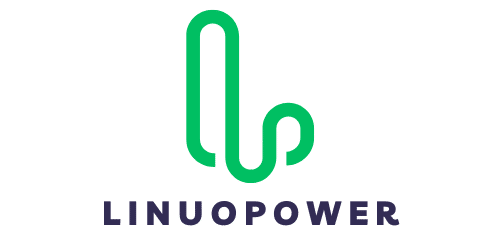In the hustle and bustle of daily life, you may find yourselves seeking solace in the calming practice of meditation. Recent advancements in technology have taken this age-old practice to the next level. Brainwave sensing headbands, paired with the power of Electroencephalography (EEG) data, are now being marketed as a superior tool for mindfulness exercises. But what is the latest development in this realm? Let’s delve into the fascinating world of wearable tech for meditation.
Muse: A Market Leader in Brain Sensing Headbands
Muse, a pioneer in the wearable tech industry, has been at the forefront of this market for some time. They continue to refine their devices, leveraging the latest advancements in technology to aid meditation. Your muse in this matter could be the Muse 2 headband, which stands out due to its advanced EEG data sensing capabilities.
Avez-vous vu cela : How Can Drones Be Programmed for Automated Roof Inspections in Urban Areas?
Muse devices monitor your brain activity in real-time. This data is then translated into weather sounds. A calm mind is represented by soft rainfall, while a distracted state might sound like a storm. This biofeedback loop helps you to stay aware of your mental state and refocus when your mind starts to wander.
Building upon the success of the Muse 2, the company recently launched the Muse S. This latest model takes sensing capabilities a step further by incorporating heart rate, breath, and body movements along with brain waves. It also adds a fabric design for extra comfort during sleep or meditation.
Avez-vous vu cela : How Are Virtual Currencies Changing the Dynamics of Online Gaming Economies?
Crossref and PubMed Scholars on Brain Sensing Devices
Crossref and PubMed, two renowned scholarly platforms, have reported numerous studies on the effectiveness and benefits of brain sensing devices like the Muse. These studies highlight how such devices can significantly enhance the meditation experience, leading to a more mindful state of being.
A PubMed published study conducted a controlled trial involving 229 adults. They found that using the Muse headband for 10 minutes a day for 12 weeks significantly improved mindfulness and decreased stress. This study shows the potential that these devices have in helping you achieve a more focused and peaceful mind.
Crossref scholars have also revealed the use of EEG data in understanding meditation. They found that, during meditation, theta and alpha brainwave activity increases. This state is associated with deep relaxation and mental clarity. By using a brain sensing headband during training, you can get a tangible measure of how well you are achieving this state.
EEG Data: The Core of Meditation Training Devices
EEG data is the backbone of brain sensing headbands, capturing electrical activity produced by your brain. It provides real-time feedback, helping you understand your meditation state.
With these devices, EEG data is typically collected from the forehead, as this is the area that generates the strongest signals, without invasive procedures. A good-quality headband has multiple sensors to ensure a more accurate data collection.
Wearable manufacturers, like Muse, have developed sophisticated algorithms to interpret this data. They can distinguish between different types of brain waves – from the low-amplitude, high-frequency beta waves associated with a highly engaged mind to the high-amplitude, low-frequency theta waves that occur during deep meditation. These insights allow you to adjust your approach to meditation, making the practice more effective.
The Future of Mind Sensing Wearables: What’s Next?
The wearable tech industry continues to innovate, seeking new ways to improve mindfulness practices. One promising area of development is the concept of ‘digital therapy’. This involves using devices like brain sensing headbands to treat mental health issues such as anxiety and depression.
As technology continues to advance, we can expect these devices to become more sophisticated. They may integrate AI algorithms that can provide personalized meditation guidance based on your unique brain patterns. Future devices could also offer a wider range of biosensors, capturing more data to provide a comprehensive picture of your overall wellbeing.
As we look to the future, the potential of brain sensing headbands is exciting. These devices are not just a trend, but a move towards a more scientific and effective approach to meditation. While the journey to mindfulness is deeply personal, technology can serve as a useful aid – highlighting a path that might otherwise have been difficult to see. As they become more commonplace in the market, it’s interesting to see how they will shape the future of meditation.
Google Scholar and Resting State Brain Activity
Advancements in the field of EEG devices and wearable technology, such as the Muse headband, have gained wide-scale attention in the scientific community. Renowned platforms like Google Scholar have numerous studies exploring the potentials of these devices, particularly their effectiveness in monitoring resting state brain activity.
Resting state brain activity refers to the brain’s function when it’s not engaged in a particular task, like during meditation. This state is often associated with a more focused, peaceful mind and higher mindfulness.
A Google Scholar published study involving low-cost EEG devices reported their efficacy in recording resting state brain activity. The study further highlighted their potential in clinical diagnosis and therapy, paving the way for digital therapy. Such findings underscore the role these devices can play in advancing our understanding of the brain and mental health.
Researchers are also exploring the possible applications of brain sensing headbands in biofeedback therapy. This involves using real-time EEG data to teach individuals how to consciously control their brain functions. For example, watching their brain waves on a screen in real time might help someone learn how to reach a meditative state more quickly.
In summary, the potential of EEG devices like sensing headbands is extensive. They offer more than just a novel approach to meditation. They provide a non-invasive, low-cost method for studying the brain and its activity, ultimately contributing to the development of better therapies for mental health disorders.
Conclusion: The Future of Brain Sensing Headbands and Mindfulness Practice
The headband market has come a long way since the initial wave of wearable technology. From the advanced Muse headband to other low-cost EEG devices, these wearables have revolutionized the way we approach mindfulness and mental health.
Headbands that can monitor our brain activity in real time are not just a trend. They represent a scientific and effective approach to understanding and achieving mindfulness. The integration of such devices with everyday practices like meditation could potentially shift how we perceive and engage with our own mental well-being.
With promising advancements in the pipeline, including AI algorithms and expanded biosensors, the future of brain sensing devices is bright. It’s exciting to envision a future where these wearables are commonplace, serving as a personal guide towards achieving a more focused and peaceful state of mind.
Moreover, the support from scholarly platforms like Crossref, PubMed, and Google Scholar is encouraging. The growing body of research underscores the significance of these devices in our quest for better mental health.
As we continue to navigate through the hustle and bustle of daily life, technology like brain sensing headbands could potentially become our greatest ally. They make mindfulness accessible, transforming the age-old practice of meditation into a scientifically-backed process that we can understand and control.
In conclusion, the future of wearable EEG technology, the Muse headbands, and other similar devices is optimistic. They promise to be more than just a trend, instead, they’re a significant step towards a more scientific approach to mental well-being. It’s an exciting time to be part of this evolution, as we explore the potentials of our own mind and the technology that helps us understand it better.












